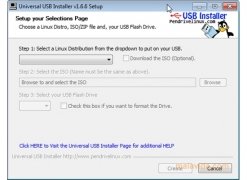
If you’re using Ubuntu (or another Linux distribution) you do not need to install the app. Download the latest Etcher release from Etcher.io and install it (if required). This makes it an ideal tool to recommend as the following steps will, more or less, be the same no-matter which operating system you are reading from!Īnd although plenty of other apps exist that do a similar job, we find Etcher the easiest tool to use to create a USB installer for Ubuntu.ġ. It is available for all major desktop operating systems: Windows, macOS and Linux. Create a USB Installer On Any OS Using EtcherĮtcher is a free, open-source image writing tool created by Resin.io.

It shows how to make a bootable Ubuntu USB drive using an open-source, cross-platform image writer called Etcher. This guide is more universal and, we think, much simpler. We wrote a similar guide to this one back in April though, in that guide, we covered different solutions for each operating systems, Windows, macOS and Linux in turn. That’s in my opinion of course, but computers are increasingly being sold without an optical disc drive, and besides: USB drives are re-writeable and reusable. If you want to do a clean install of Ubuntu 16.10 when it lands next week, or install it on a different computer, then a bootable flash drive is the way to go. I then edited /media/usb/boot/grub.cfg to add an. Mount ~/ /media/iso/ -o loopĬp /media/iso/boot/grub/grub.cfg /media/usb/boot/grub/ # mount ISO image, copy existing grub.cfg

Grub-install -force -no-floppy -root-directory=/media/usb /dev/sdĬp ~/ /media/usb I was able to get halfway there - it booted from USB, displayed the grub menu and started the installation, but the installation did not complete.įor reference, this is the closest I got: sudo su



 0 kommentar(er)
0 kommentar(er)
